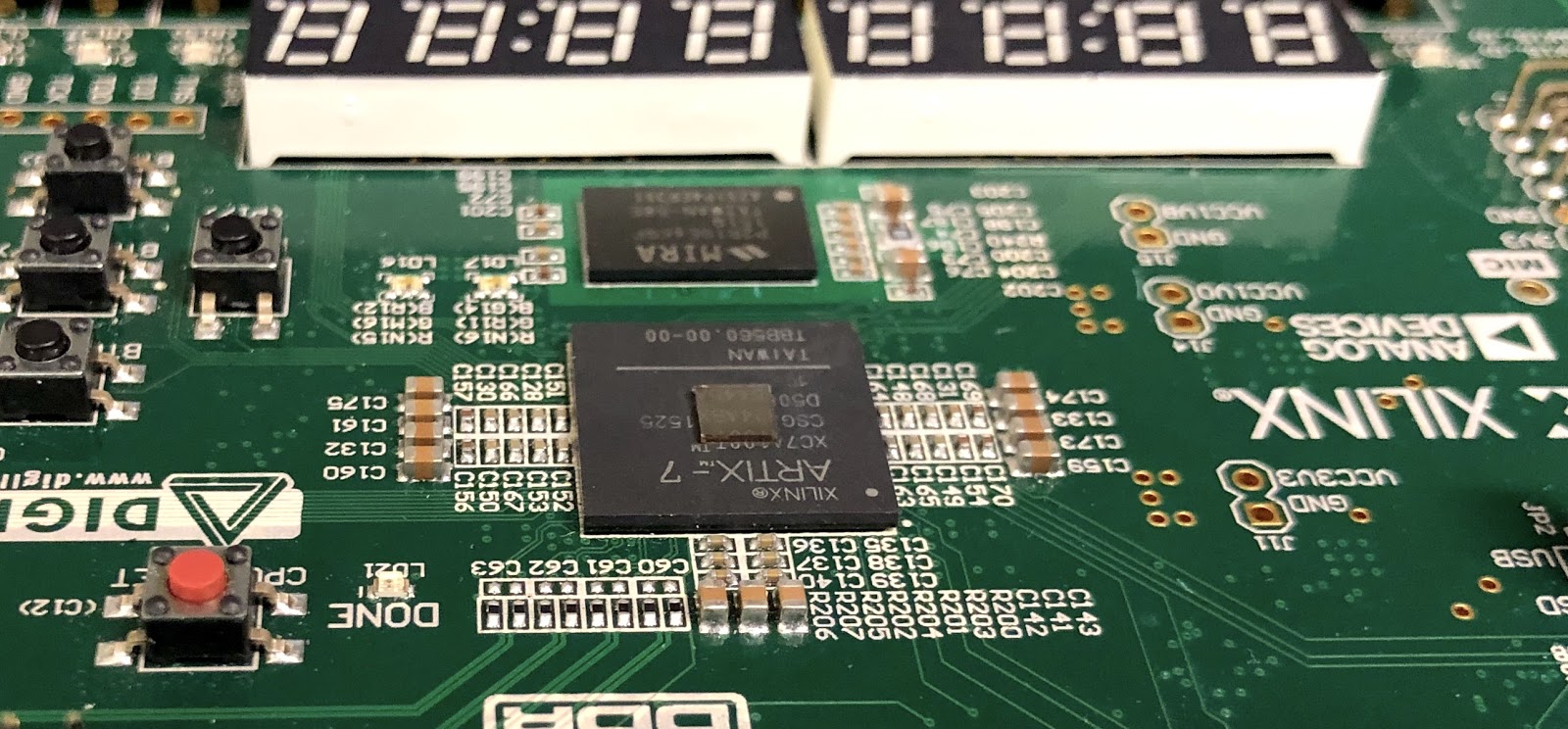QTC Researchers Combine QDM and ML to Noninvasively Probe an Integrated Circuit
Protecting integrated circuits (ICs) against manufacturing flaws and hardware attacks is a critical challenge for the semiconductor industry. For example, hardware attacks can occur at any stage of the globalized semiconductor supply chain, and can range from insertion of malicious Trojan circuitry during the design and fabrication stages, to modification or counterfeiting during the packaging and distribution stages. Horizontal integration of the industry has led to contracting of IC fabrication, packaging, and testing to offshore facilities, resulting in a reduction of secure oversight and quality control. In addition, growth of the second hand electronics market has led to a drastic increase in counterfeit ICs. Detection of IC tampering or counterfeiting has consequently become essential to ensure that hardware can be trusted. Quantum Technology Center (QTC) Director Ronald Walsworth, QTC Scientist Matthew Turner, and MITRE collaborator Edlyn Levine, have developed a Quantum Diamond Microscope (QDM), which is a common approach to ensemble Nitrogen-vacancy (NV) wide-field magnetic imaging, augmented with Machine Learning (ML), that provides an optimistic approach for nondestructive physical testing of ICs. In their paper, published recently in Physical Review Applied, the researchers present a number of advantages of their QDM+ML technique over typical scanning magnetic measurement techniques, which includes the use of wide-field imaging, high spatial resolution, increased frequency range, an increase in image speed of magnetic fields, vector field mapping capabilities, and room temperature operation ability. Of the wide-field NV imaging, Turner, senior author of the paper, says, “it is unique, and allows each of these things to perform simultaneously...the approach to focus on naturally occurring DC field mapping is novel.” The researchers supplemented their QDM with ML because it is critical for state classification because of the complex spatial patterns seen in a lot of activity "fingerprints." The machine learning aspect helps identify the patterns of highest variability over their measurements, and classifies the state based on the patterns of variability. ”We have been working on more sophisticated neural network based classifiers to improve classification accuracy and robustness to noise and other perturbations of the image,'' says Turner. “This also assists to differentiate from "state dependent" variations versus naturally occurring variations on the board.” In the project, Ring Oscillators were used because they are a well controlled system in which the location, magnitude, and spatial properties of the magnetic fingerprint could be easily changed to demonstrate the spatial resolution and minimum detectable field under a wide variety of situations. This procedure can be extended to detect the execution of unwanted functionality of the board through anomalous magnetic field fingerprints and comparison to known golden circuits. In regards to other techniques, scanning loop probe measurements measure very fast oscillating magnetic fields due the activity of the board, which can measure very high frequency signals at high bandwidth so temporal transient events can be easily seen. However, spatial resolution of probes can blur out activity and a "smart adversary" could compensate for activity by having cancelling magnetic fields nearby. Scanning magnetometry measurements (SQUID probes) have previously demonstrated the ability for magnetic field imaging measurements to be used for noninvasive fault detection and failure analysis, but so far have focused narrowly on connecting leads to integrated circuits and applying external currents to localize defects, rather than monitoring the natural activity of integrated circuits under functional conditions. Therefore, the advantages of the QTC QDM+ML technique includes a reduction in cost by close to an order in magnitude (10x) below competing technologies for high resolution magnetometry and time, which is also drastically reduced due to simultaneous wide field imaging, in contrast to scanning. The researchers aim to further improve sensitivity and speed of the QDM+ML based on known techniques developed in the Walsworth Lab, which have been proposed in recent published papers in the Journals Nanophotonics and Reviews of Modern Physics. Walsworth and his colleagues identify improvements to spin dephasing time, readout fidelity, and host diamond material properties to enhance solid-state sensor performance. “The QDM+ML application to ICs is one of the most promising near-term applications of quantum technology to important real-world problems,” says Walsworth, who is a professor of electrical and computer engineering and physics. “Commercialization is planned to begin this Fall, as one of the first spin-outs of QTC.”
Related Articles: August 18, 2020 Prev Next |


